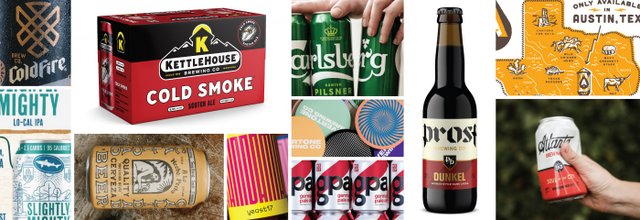
This piece was provided by CODO Design, a branding firm based in Indianapolis. They’ve worked with breweries across the United States and around the world, on naming, positioning, branding and rebranding, responsive web design, and package design. If you’d like to discuss your brewery’s branding, shoot Isaac an email: [email protected]
To read this entire post, head over to the CODO blog right here.
Last week, we discussed some of the visual craft beer branding trends that have risen in prominence this year. Now, let’s go beyond aesthetics to discuss some of the larger trends that are affecting all three tiers of this industry.
Major rebrands
Getting your house in order
The bulk of our work this last year has been rebranding established breweries. These projects have ranged from folks who have been open a few years to breweries celebrating their 25th anniversary. We’re only five months into 2019 and have already kicked off several more of these engagements around the country. We’ve heard from many breweries that this can be attributed to tighter competition. To run a successful brewery in 2019, you have to orchestrate everything flawlessly — make stellar beer, execute a nimble marketing/sales plan and have awesome branding. Expect to see more of this over the next several years, particularly at the middle / regional echelons of the craft market as breweries fight to avoid the “Jaws of Death.”

‘Low cal and lite’ craft beer wave
For your health!
We touched on this trend a few years ago, and are now seeing real deal (Top 50) craft breweries tout the low carb, ‘Lite’ nature of certain beers in their portfolio. This follows a societal trend towards more mindful and healthy eating and will only ramp up when (or if?) cannabis becomes more competitive with beer. And don’t forget about the Voluntary Disclosure Initiative — give it a few more years and this will likely become a required labelling element, which means that consumers will see exactly how many carbs and calories are lurking inside that can.
Beer has been slowly losing market share to wine and liquor for the last few years. If we want to stop the bleed, then we need to work to make the beverage more amenable to consumers’ lifestyles. There will always be a place for 11 percent DIPAs and lovely imperial stouts. But to the vast majority of beer drinkers in the United states, “lite” beer is the expectation, both in terms of flavor as well as overall health impact. There’s nothing wrong with meeting your customers where they are and giving them a well-made, local option.
Out of this trend we expect interesting positioning opportunities for categorical differentiation in a crowded space. We’ve seen terms like “Recovery Beer,” “Functional Beer,” and even the ambitious moniker “Wellness Beers” used in the market. How that last one makes it past the TTB, I have no idea. But this is very smart from a brand strategy standpoint.
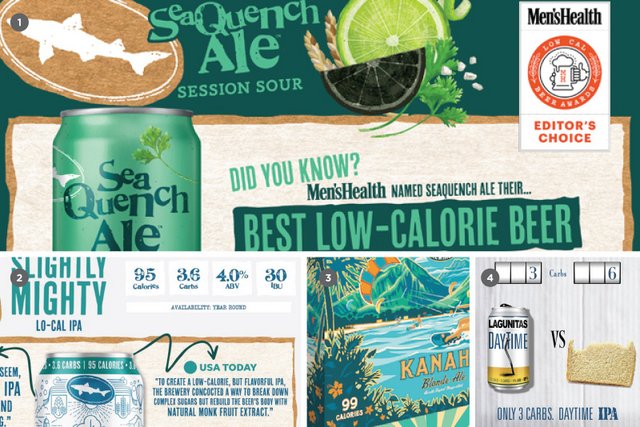
Share of throat
As many brand extensions as you can cram
Over the last year, we’ve fielded inquiries from breweries who are getting into everything non-beer, from distilled spirits, seltzer and hard seltzers, cider, kombucha, RTD cocktails, cold brew coffee, FMB’s, and CBD/THC-infused everything. From a larger industry perspective, we’re seeing the biggest of big beer companies making moves into non-beer markets (and the BA itself editing its definition of “craft” to better accommodate this new phenomenon). Inversely, we’re seeing traditionally non-alcoholic brands move into the space as well. And in general, it seems to be on everyone’s mind — we’ve seen several presentations on these various beverages, particularly kombucha and seltzer, at craft brewers conferences around the country this year.
Whether to fill excess brewhouse capacity, or to move into another category that the brewery team is passionate about, we only see this trend ramping up over the next few years as breweries scramble to bolster sales. A word of advice for those who are considering making something aside from beer: make sure to think about your brewery’s brand architecture and how adding a new extension might affect your overall footprint.
Turn-on-a-dime style prominence
Blink and you’ll miss it
This trend took root three or four years ago with the small batch can release model (driven in large part by the Instagram / ISO culture / NE IPA phenomenon). It quickly transcended fad status and led to several new style categories from the Brewers Association. One style that perfectly encapsulates this phenomenon is the Brut IPA.
I was in Montana recently doing field work for a brewery rebrand and saw a Brut IPA on draft. I’d never heard of the style, so I ordered it and loved it. I flew home to Indianapolis a few days later and immediately saw the style at breweries all over town. I’m not exaggerating when I say that this style descended upon Indianapolis in a matter of weeks, seemingly taking hold even faster than the haze craze.
If tastes and whims are shifting this quickly, how is a craft brewery supposed to keep up with the latest and greatest styles? The anticlimactic answer that we’ve heard from brewers all over be country; Instagram. Something as simple as periodically following the #craftbeer hashtag will help you keep an eye on what’s coming next.
A move toward sustainability
Saving the whales, one IPA at a time
During the brewing process through transportation and final packaging, the beer industry creates a lot of waste. As consumers, we’ve got our fair share of blood plastic on our hands. We can dutifully slice up all of our 6-pack rings, sheepishly return a 4-ft tall stack of PakTechs to the brewery from whence they came, or, if you’re feeling nostalgic: simply use a growler. But real impact will come when the production side of the industry becomes more mindful of this issue.
It’s been heartening to see an uptick in brewery clients discussing this topic openly over the last year. The options for smaller breweries are somewhat limited right now, but we’re seeing mega breweries make moves in this direction. And as these big guys move toward sustainable packaging, we expect cheaper solutions to become more mainstream and available for smaller craft brewers.
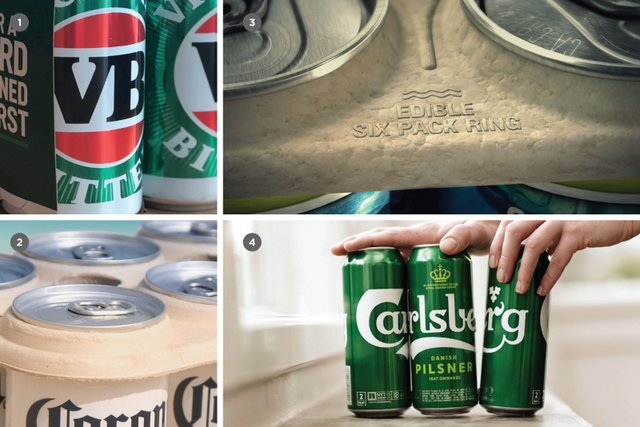
Evolving on premise thinking
Lead with the right
Even as recently as five years ago, it was normal for us to design standalone tap handles for a brewery’s best-selling beers — a unique handle for the horse and a generic handle that can be updated as new styles come on. Now that draft accounts are at such a premium, we’ve started to hear breweries of all sizes walk this idea back. Directly from the mouth of one of the larger breweries we rebranded this year, “If we get one handle on at an account, it’s going to be our best seller, so we need to make sure we push our brewery’s brand there as much as possible [as opposed to the specific beer itself].”
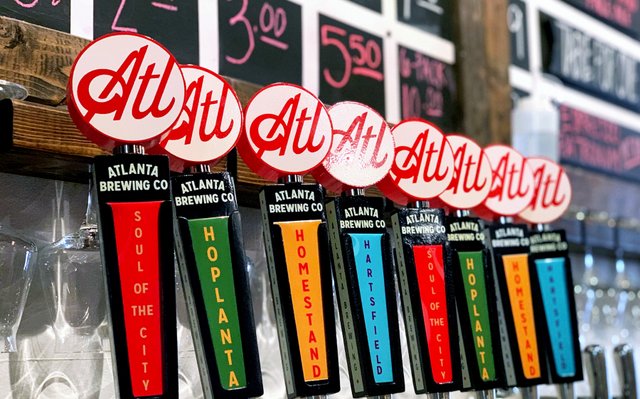
Flagship vs. seasonal vs. specialty look and feel
Bringing it all together
When kicking off a package design project in the past, it was almost a given that a brewery would have a look for their flagship packaging which would then inform a similar, but slightly differentiated seasonal/specialty design. The thinking at the time was that a consumer would be familiar enough with the mainstays to realize that this was 1. from the same brewery and 2. a special release.
But as more breweries are shifting portfolio strategies, we’ve seen a move toward ‘heavy rotationals,’ that is, making and selling a beer as long as there’s a demand for it (not tied to a specific season or permanent portfolio). After a year or so, if velocity is still there, you can make it an official year-round item. Or, if you’re starting to see a decline in sales, you can replace it with something else.
What we’re seeing in the market challenges the long standing model of flagships vs seasonals, which has significantly altered our approach to packaging. Like the aforementioned approach to tap handles, brewers want to make sure that if someone sees their packaging on a retail shelf, they immediately recognize who made it. Thus, we’re seeing a move toward selling the main brewery brand itself to customers — as opposed to selling an individual beer or a series of specialty releases.
Near beer is here
The ultimate in session
Similar to the “Lite Craft” trend, we’ve had four non-alcoholic “beer” branding inquiries come in since the start of the year. Four might not sound like a lot, but that’s four more than we’ve received in the last ten years of business. If that’s not telling of a looming trend, I don’t know what is.
As we step outside of the beer category for a moment, this trend runs parallel to the explosion of the seltzer category (as well as the burgeoning “Zero Proof” cocktail movement). While anecdotal, most of the people I chat with are open to this idea. We love beer and want to drink it regularly, but aren’t too keen on getting hammered on a Tuesday night (not to mention the 3,000 calories that come with it). This is a wide-open space and I imagine we’ll see some big players make moves to cover it over the next year.
Deep dive differentiation
Doubling down on terroir and provenance
We’re seeing a rise on the B2B side of the industry in craft maltsters, yeast manufactures and hop farms. Talks of “heritage” this and “heirloom” that abound. I imagine we’ll see more breweries begin touting the provenance of their ingredients like car manufactures call out specific parts — Cummins Engine in a Dodge, etc.
This makes a ton of sense to us. If a brewery is willing to spend significant money on its branding and packaging, it would follow that they would also seek other avenues to differentiate their products. Using imported, local, or otherwise craft malts, hops and yeast is an attention-grabbing approach to add to your beer’s uniqueness, quality, terroir and story. All this, while supporting like-minded businesses in your supply chain.
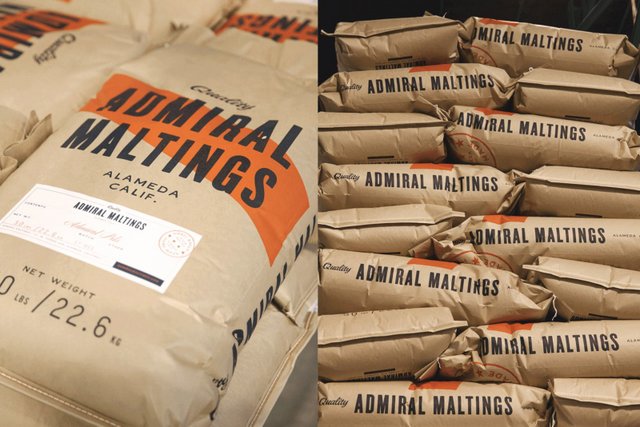
Sales, branding and distribution alignment
Great beer still matters, but so does branding
Our recent brewery rebranding projects have involved distributors in the conversation, which has allowed us to make more impactful work. Distributors have taught us to ask better questions of our clients regarding growth and market expansion. Before expanding outward, have you actually gone deep enough in your home market? Do you need to launch other states to continue growing? Are you prepared to lay down the capital to buy new tanks, square away new distributor partners, and hire the new sales people it will take to pull it off properly?
Over the last 8+ years of working in this space, we’ve seen a lot of breweries chase the mile wide/inch deep distribution model to achieve volume. We would like everyone reading this to think about their current market — what services and value (beyond great beer) can you offer your customers and current accounts? We’re hearing directly from distributors that breweries should be doubling down on local. And this makes sense — with over 7,300 breweries in the United States, you have to own your block / neighborhood / town / city / state (now more than ever) before you even consider expanding.
***
We used to design a lot more sale sheets. Beyond your typical merch — T-shirts, coasters, tin-tackers, etc., breweries would want a series of sheets they could use to take to key accounts that would run down pricing and tasting notes. Now, what we’re hearing is that most retailers and on-premise beer buyers don’t necessarily want to be sold to; they just want to see what you have and make their own decision. In the words of one distributor we spoke with recently, “The beer quality and brewery’s reputation precede most sales literature you might have. All I need from that is the keg price and availability. In many ways, the beer [and its reputation] is going to sell itself — all I’m doing is getting it in front of the buyer.”
In other words, “make great beer and put it in a great-looking package.”
Indeed.
If you’d like to learn more about branding your craft brewery, check out CODO Design’s Craft Beer Branding Guide. This practical, step-by-step guide will help you navigate the entire branding process from naming and positioning, branding or rebranding, developing your responsive website and package design.





Leave a Reply
You must be logged in to post a comment.